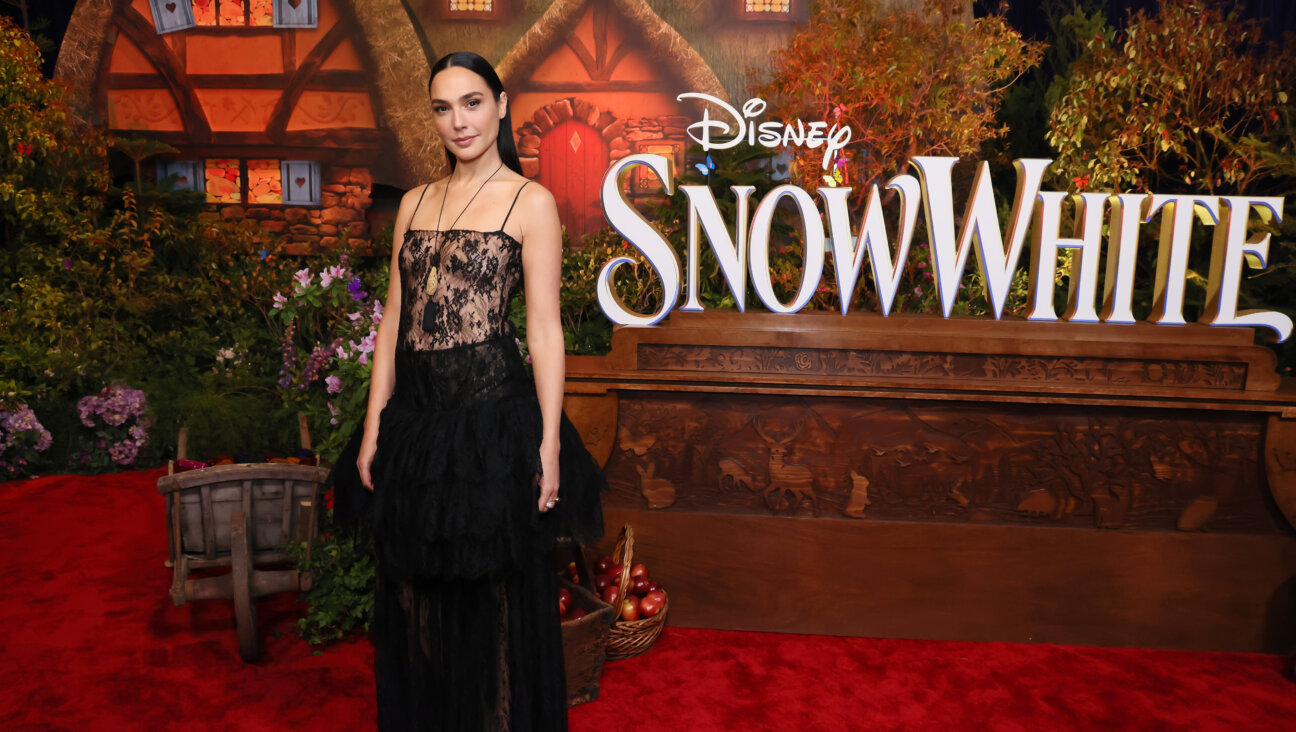Dishing Up History

Many Faces: The kitchen served multiple roles in New York tenements in the late 19th and early 20th centuries. Here, members of an immigrant family shell nuts at their kitchen table to earn money. Image by COURTESY OF THE NEW YORK TRIBUNE
When 97 Orchard Street on Manhattan’s Lower East Side welcomed its first families in 1863, tenants like Wilhelmina Glockner had to haul tubs of water for each day’s cooking and cleaning up the building’s narrow staircase.
Even without iceboxes or running water, the kitchens in the cramped tenements were the heart of each home.
More than a place to cook and eat, the kitchen was a workspace where women and children earned pennies shelling nuts or sewing. It was a laundry room and a place to bathe, even a bedroom for boarders.
Nearly 7,000 people called 97 Orchard Street home during its 70-year lifespan, and telling their stories is the sacred charge of the Lower East Side Tenement Museum.
Focusing on a handful of families from Germany, Italy, Ireland and Prussia, museum tours eloquently convey the story of immigrant life in the mid-19th and early 20th centuries, when a veritable ocean of newcomers flooded into lower Manhattan in pursuit of America’s promise.
So last March, when museum officials broke ground on their most ambitious expansion to date — construction of a new visitors center, with a bookstore and classrooms for touring schoolchildren — the blueprints prominently featured a demonstration kitchen where guests can truly taste tenement life.
Jane Ziegelman, a food writer and teacher from Brooklyn, will run the new culinary program, which is expected to open in late fall or early winter. And in anticipation of that task, Ziegelman has written the book “97 Orchard: An Edible History of Five Immigrant Families in One New York Tenement” (Smithsonian Books/HarperCollins), which comes out in June.
Just as museum tours focus on individual families who came from different parts of Europe in distinct decades, Ziegelman concentrates her story on the pantries of those families. Much of her research was done in the museum’s archives.
“The book is definitely inspired by the museum,” museum spokeswoman Kate Stober said, but it is not being published as a museum fundraiser. It is simply a tribute to the women (and men) who preserved the recipes of their ancestors.
Ziegelman tells us how much oatmeal and flour immigrants packed to cook for themselves in steerage before 1848, when tighter regulations required ships to provide provisions. And she describes the meals at Ellis Island.
For the more than 1 million Jews who immigrated to the United States between 1900 and 1910, Ziegelman writes, the culinary challenges at sea were multiplied by the scarcity of kosher foods. Among those who brought their own provisions, she explains, “one very common food was thick slices of zwieback-like bread that had been dried in the oven to keep it from spoiling…. For protein, they packed dried fish and salami.”
Once they passed inspection at Ellis Island, freshly landed Jews could buy tinned sardines and kosher sausages at the lunch stand there, Ziegelman writes. But for those who were detained, kosher food was not available until 1911, when the Hebrew Immigrant Aid Society intervened with authorities.
The kosher menus from 1914 show that boiled eggs, bread and coffee were served at breakfast; potato soup, goulash, vegetables and bread for the midday meal, and pickled herring, fresh fruit, and bread and butter for supper.
In the face of pressure to assimilate in the New World, food from the Old World became a source of ethnic or national pride for immigrants, Ziegelman says in the book. That was especially true for Jews, whose core belief in the sacredness of food was a linchpin.
In tenements, meal preparation was a challenge that required effort from every member of the family. Children scavenged wood for the stove, and mothers stretched every penny, shopping at pushcarts where vendors were willing to sell just half a parsnip for that day’s soup or stew.
“Tenement housewives were like human freight elevators,” she writes in the book, “hauling groceries, coal, firewood and children up and down endless flights of stairs.”
When 18-hour workdays precluded going home for lunch, knishes emerged as perfect for packing. Recipes for veal schnitzel with wild mushrooms, boiled
beef with horseradish, stuffed pike and gefilte fish were shared among tenants from different lands. And some dishes even worked their way into the new American menu.
Ziegelman came to the museum’s attention after she founded a hands-on educational program called Kids Cook! which offers children classes in basic cooking and pastry skills. She has also taught in New York public schools and libraries, introducing children to the vast array of ethnic cuisines in the city.
In the culinary program, Ziegelman will likely bring in guest chefs and have all-ages cooking programs. Although the demonstration kitchen will not be kosher, she anticipates holding some programs in nearby kosher facilities.
The building at 97 Orchard Street, now a National Historic Landmark, will remain, said Morris Vogel, museum president. But for the expansion, the group bought another old tenement at 103 Orchard, across from the current visitors center, in a storefront the museum has been renting.
“We already had kitchens in the tenement apartments, but we wanted to go a step further,” Vogel said in a recent telephone interview with the Forward, “because food is a central ingredient in the story of immigration.
“We get 170,000 visitors a year,” Vogel said, “and we want them to understand what their forbearers went through in negotiating the terms of their lives in the New World. In that way, we develop an understanding of how important immigration has been in the development of this country.”
“Food,” he said, “offers another dimension into that all-American story.”
Dianna Marder is a staff writer at the Philadelphia Inquirer.
A Recipe From the Past
Jewish cooks on the Lower East Side made a deeply flavored soup, with beans, onions, carrots, celery and barley, that came to be called krupnik, Jane Ziegelman writes in her forthcoming book, “97 Orchard.” The book contains about a dozen recipes, preserved with sparse details. Among the recipes is this gem from the 1940 “Jewish American Cook Book,” by Regina Frishwasser, who in the 1930s edited a regular cooking column (in Yiddish) in the Jewish Daily Forward, featuring recipes sent in by readers. Below is an excerpt:
Krupnick
Bring 2 quarts of water to a boil, and add 1 cup yellow split peas, a half-cup minute barley, a half-cup lima beans and 1 teaspoon salt.
Simmer for 1 hour, and add 1 ounce broken dried mushrooms, 1 minced onion, 1 diced carrot and 1 diced parsley (root). Cook until the vegetables are tender.
Fry 1 minced onion in 2 tablespoons of butter until golden brown, then add to the soup.
For more recipes from the pages of “97 Orchard” click here
The Forward is free to read, but it isn’t free to produce

I hope you appreciated this article. Before you go, I’d like to ask you to please support the Forward.
At a time when other newsrooms are closing or cutting back, the Forward has removed its paywall and invested additional resources to report on the ground from Israel and around the U.S. on the impact of the war, rising antisemitism and polarized discourse.
Readers like you make it all possible. We’ve started our Passover Fundraising Drive, and we need 1,800 readers like you to step up to support the Forward by April 21. Members of the Forward board are even matching the first 1,000 gifts, up to $70,000.
This is a great time to support independent Jewish journalism, because every dollar goes twice as far.
— Rachel Fishman Feddersen, Publisher and CEO
2X match on all Passover gifts!
Most Popular
- 1

Film & TV What Gal Gadot has said about the Israeli-Palestinian conflict
- 2

News A Jewish Republican and Muslim Democrat are suddenly in a tight race for a special seat in Congress
- 3

Fast Forward The NCAA men’s Final Four has 3 Jewish coaches
- 4

Culture How two Jewish names — Kohen and Mira — are dividing red and blue states
In Case You Missed It
-

Books The White House Seder started in a Pennsylvania basement. Its legacy lives on.
-

Fast Forward The NCAA men’s Final Four has 3 Jewish coaches
-

Fast Forward Yarden Bibas says ‘I am here because of Trump’ and pleads with him to stop the Gaza war
-

Fast Forward Trump’s plan to enlist Elon Musk began at Lubavitcher Rebbe’s grave
-
Shop the Forward Store
100% of profits support our journalism
Republish This Story
Please read before republishing
We’re happy to make this story available to republish for free, unless it originated with JTA, Haaretz or another publication (as indicated on the article) and as long as you follow our guidelines.
You must comply with the following:
- Credit the Forward
- Retain our pixel
- Preserve our canonical link in Google search
- Add a noindex tag in Google search
See our full guidelines for more information, and this guide for detail about canonical URLs.
To republish, copy the HTML by clicking on the yellow button to the right; it includes our tracking pixel, all paragraph styles and hyperlinks, the author byline and credit to the Forward. It does not include images; to avoid copyright violations, you must add them manually, following our guidelines. Please email us at [email protected], subject line “republish,” with any questions or to let us know what stories you’re picking up.














